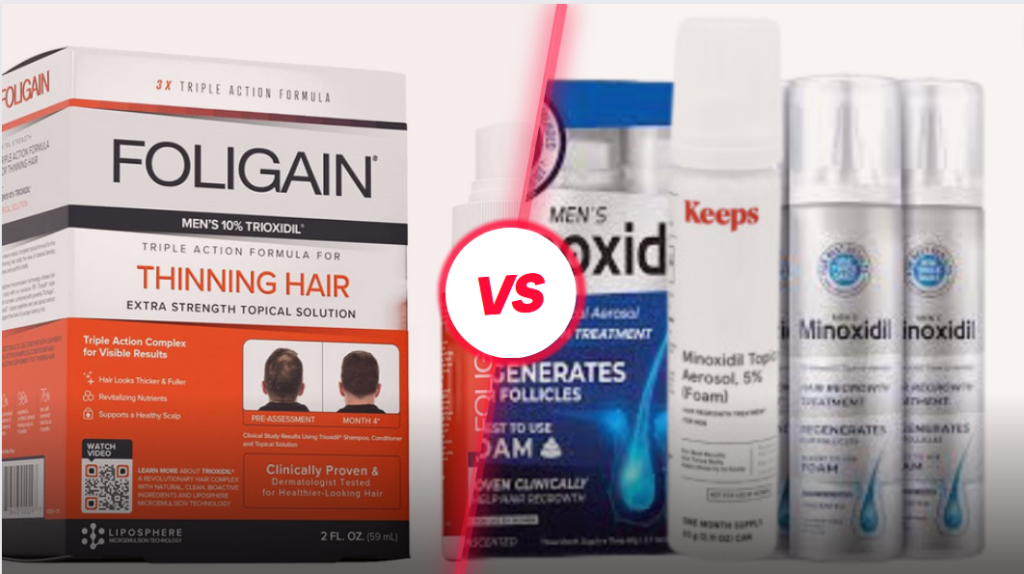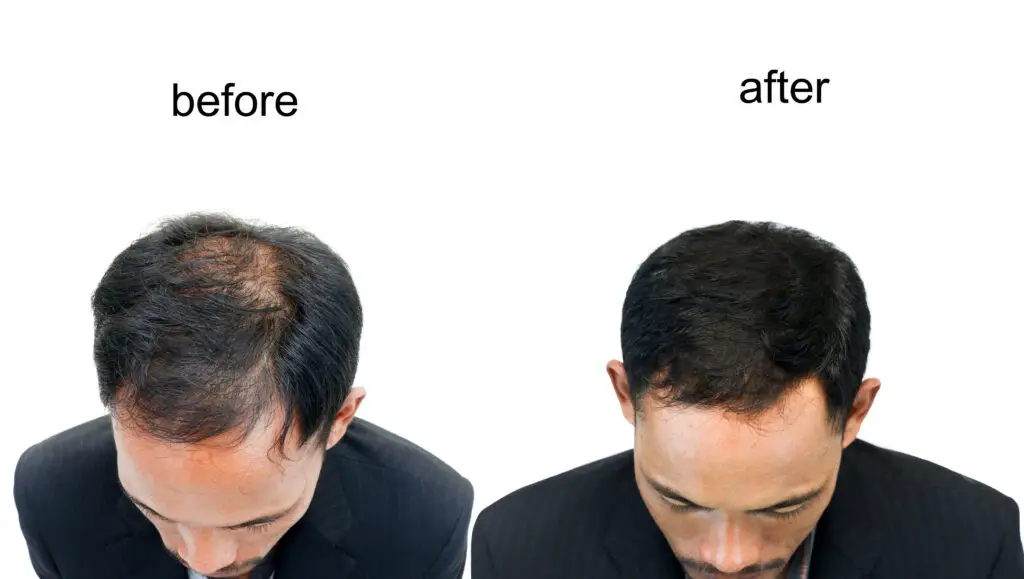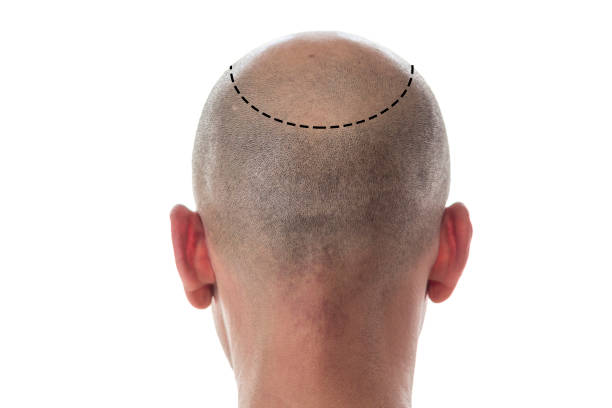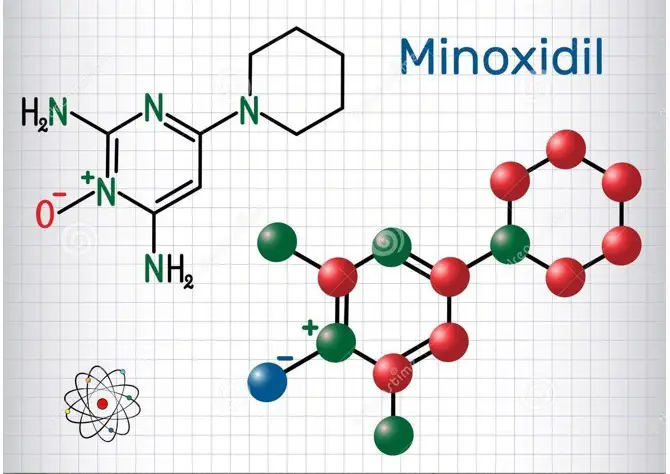Discover the key differences between Trioxidil vs Minoxidil to make an informed choice for your hair loss treatment.
In the ever-expanding world of hair loss solutions, two names often rise to the top: Trioxidil and Minoxidil. These two treatments have garnered significant attention, both in clinical circles and among those desperately seeking a remedy for thinning tresses. But with so many options available, making an informed decision becomes crucial. After all, the effectiveness of a hair loss treatment can vary from person to person, and what works for one may not yield the same results for another.
Choosing the right hair loss treatment is not just about immediate results; it’s a long-term commitment that could have both positive and negative impacts on your life. Side effects, cost, and the time required for visible results are just a few factors that make this decision all the more critical. Is Trioxidil more effective than Minoxidil? Does Minoxidil have more side effects? These are questions that often plague the minds of those looking to start their hair regrowth journey.
This comprehensive guide aims to answer these pressing questions and more. It will delve deep into the intricacies of both Trioxidil and Minoxidil, comparing their effectiveness, side effects, and user testimonials. For those interested in real-world results, the article will feature before-and-after case studies that offer a tangible look at what each treatment can achieve.
Additionally, the guide will address common queries in an extensive FAQ section. If you’re still on the fence about which treatment to go for, this article will serve as your definitive guide. Don’t miss the in-depth comparison between Trioxidil and Minoxidil and the real-world case studies that could be the deciding factor in your hair regrowth journey. Ready to make an informed choice? Dive in to find the best hair loss solution for you.

Ready to take the next step? Explore our comprehensive guide on topical Finasteride and Minoxidil to further expand your options.
Trioxidil vs Minoxidil: Understanding the Basics
Before delving into the details, it is important to understand what Trioxidil and Minoxidil actually are and how they work.
What is Trioxidil?
Trioxidil is a relatively new entrant in the field of hair loss treatments. Developed as an alternative to the more commonly known Minoxidil, Trioxidil aims to offer a more targeted approach to hair regrowth. Originating from extensive scientific research, this topical solution was formulated to combat various stages of hair loss effectively. Unlike its counterparts, Trioxidil focuses not just on the symptoms but also on the underlying causes of hair thinning, offering a more holistic treatment plan.
It contains a unique blend of ingredients that aim to address the root causes of hair loss. Trioxidil is formulated to target the hair follicles, providing essential nutrients and stimulating growth. The key active ingredient in Trioxidil is minoxidil, which has been proven to promote hair regrowth.
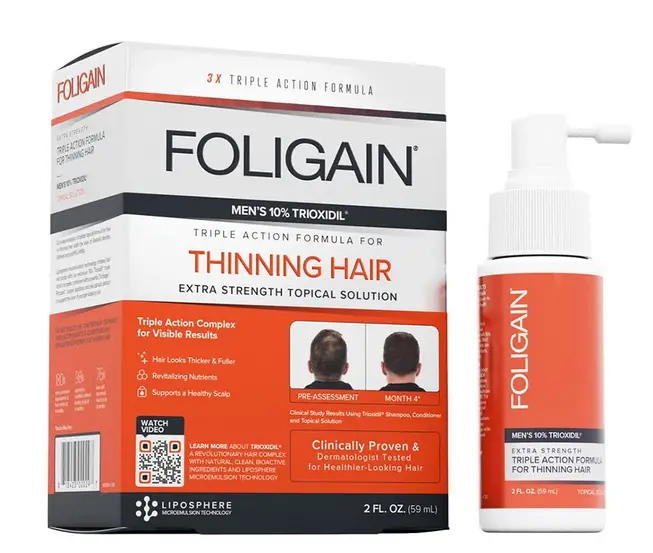
How Does Trioxidil Work?
Understanding how Trioxidil works is crucial for anyone considering this treatment option. The formula is designed to stimulate hair follicles, improve scalp health, and nourish the hair from root to tip. It employs a triple-action mechanism that targets the most common issues related to hair loss, such as weakened follicles and poor scalp circulation. By doing so, Trioxidil not only promotes new hair growth but also strengthens existing strands.
For a more detailed explanation on the working mechanism of Trioxidil, check out our comprehensive guide on Foligain Trioxidil Reviews for how this hair loss treatments work.
Pros and Cons of Using Trioxidil
When it comes to the advantages and disadvantages of using Trioxidil, it’s essential to weigh your options carefully.
Pros:
- Targeted approach to hair loss
- Fewer side effects compared to Minoxidil
- Suitable for various stages of hair thinning
Cons:
- Less research-backed data available
- May be more expensive than other treatments
| Pros | Cons |
|---|---|
| Targeted approach to hair loss | Less research-backed data |
| Fewer side effects | May be more expensive |
| Suitable for various stages |
Ready to explore Trioxidil as a hair loss solution? Dive deeper into its benefits and drawbacks by reading Amazon in-depth Trioxidil review.
What is Minoxidil?
Minoxidil is a well-known name in the realm of hair loss treatments. Initially developed as a medication for high blood pressure, it was soon discovered that one of its side effects was unexpected hair growth. This led to its repositioning as a topical treatment for hair loss, and it has since become one of the most widely used solutions for this condition. Approved by medical authorities, Minoxidil has been the go-to option for many individuals experiencing various stages of hair thinning and loss.
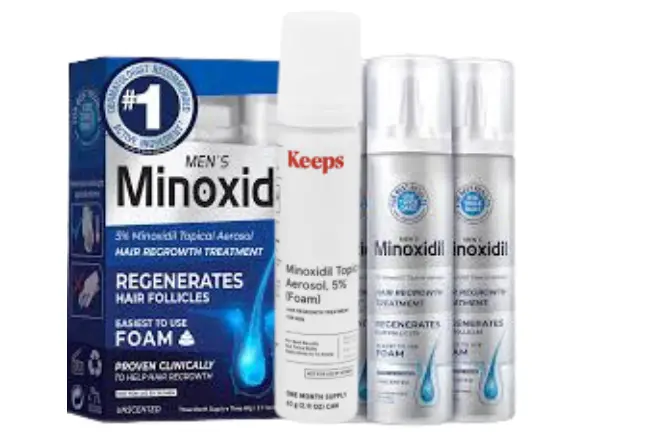
How Does Minoxidil Work?
The mechanism of Minoxidil is quite different from other hair loss treatments. It functions as a vasodilator, widening the blood vessels to improve blood flow to the hair follicles. This increased circulation provides the follicles with more nutrients and oxygen, stimulating hair growth and revitalizing weakened strands. However, it’s worth noting that Minoxidil primarily focuses on promoting new growth rather than addressing the root causes of hair loss.
For those who are looking for different approaches to hair loss, you might want to explore our guide on Minoxidil alternatives.
Pros and Cons of Using Minoxidil
When considering Minoxidil as a hair loss treatment, it’s vital to understand both its strengths and weaknesses.
Pros:
- Clinically proven effectiveness
- Widely available and affordable
- Suitable for both men and women
Cons:
- Possible side effects like scalp irritation
- Requires long-term commitment for sustained results
| Pros | Cons |
|---|---|
| Clinically proven effectiveness | Possible side effects |
| Widely available | Requires long-term commitment |
Considering Minoxidil for your hair loss journey? Learn more about its pros and cons to make an informed decision by reading our comprehensive Minoxidil review.
In-Depth Comparison: Trioxidil vs Minoxidil
Effectiveness in Hair Regrowth
When it comes to effectiveness in hair regrowth, both Trioxidil and Minoxidil have their merits. Trioxidil is known for its targeted approach, focusing on the underlying causes of hair loss, such as weakened follicles and poor scalp circulation.
On the other hand, Minoxidil primarily aims to stimulate new hair growth by improving blood flow to the hair follicles. Clinical studies have shown that both treatments can be effective, but the results may vary depending on individual factors like the stage of hair loss and overall scalp health.
Potential Side Effects
The side effects associated with these treatments are an essential consideration. While Trioxidil is often praised for having fewer side effects, Minoxidil can sometimes cause scalp irritation and other minor issues.
Trioxidil Side Effects
Trioxidil’s formulation includes minoxidil, which may cause side effects such as scalp irritation, itching, and dryness. These side effects are typically mild and subside with continued use. However, if you experience any severe or persistent side effects, it is advisable to discontinue use and consult a healthcare professional.
Minoxidil Side Effects
Minoxidil may also cause side effects, including scalp irritation, redness, and itching. In rare cases, individuals may experience more serious side effects such as chest pain, dizziness, or rapid heartbeat. If you experience any severe side effects while using Minoxidil, it is important to seek medical attention immediately.
Table: Side Effects of Trioxidil vs Minoxidil
| Side Effects | Trioxidil | Minoxidil |
|---|---|---|
| Scalp Irritation | Rare | Common |
| Dryness | Occasional | Frequent |
| Allergic Reactions | Very Rare | Rare |
It’s crucial to consult a healthcare provider before starting any new treatment to assess your suitability and risk for side effects.
User Reviews and Testimonials
User reviews and testimonials offer valuable insights into the real-world effectiveness of these treatments. Trioxidil users often report noticeable improvements in hair density and overall scalp health. In contrast, Minoxidil users frequently mention the speed of hair regrowth but also note the need for long-term commitment to maintain results.
For more firsthand accounts, check out our Foligain reviews that delve into user experiences with Trioxidil-based products.
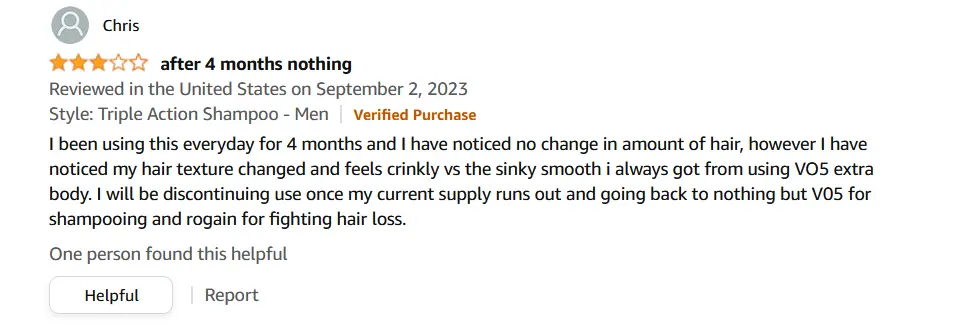
Cost Comparison
Last but not least, the cost factor plays a significant role in choosing between Trioxidil and Minoxidil. Generally, Minoxidil is more widely available and tends to be more affordable. Trioxidil, being a newer and more targeted treatment, often comes with a higher price tag. However, the cost should be weighed against other factors like effectiveness and potential side effects to determine the overall value for money.
| Cost Factor | Trioxidil | Minoxidil |
|---|---|---|
| Average Price | Higher | Lower |
| Availability | Less Common | Widely Available |
Ready to make your choice? Explore the cost-effectiveness of each treatment in our comprehensive cost comparison guide.
The Formulation: What’s Inside Trioxidil vs Minoxidil?
Understanding the formulation of Trioxidil and Minoxidil is crucial in determining their effectiveness and potential side effects.
Trioxidil Formulation
Trioxidil combines various ingredients that work synergistically to address hair loss. In addition to minoxidil, Trioxidil contains key components such as:
1. Aminexil: A compound that helps to prevent collagen hardening around hair follicles, allowing for better nutrient absorption.
2. Saw Palmetto: Known for its ability to inhibit the enzyme responsible for converting testosterone into dihydrotestosterone (DHT), which is a hormone linked to hair loss.
3. Arginine: An amino acid that promotes blood flow to the scalp, delivering essential nutrients to the hair follicles.
4. Caffeine: Known for its stimulating properties, caffeine helps to increase blood circulation and promote hair growth.
Minoxidil Formulation
Minoxidil typically comes in the form of a topical solution or foam. The active ingredient, minoxidil, is the same in both Trioxidil and Minoxidil. However, the additional ingredients in Minoxidil formulations may vary depending on the brand. Some common ingredients found in Minoxidil products include propylene glycol, alcohol, and water.
Effectiveness: Does Trioxidil or Minoxidil Really Work?
When it comes to effectiveness, both Trioxidil and Minoxidil have shown promising results in promoting hair regrowth. However, individual experiences may vary, and it is important to manage expectations.
Trioxidil Effectiveness
Trioxidil’s unique formulation aims to target the root causes of hair loss, making it a comprehensive solution for those experiencing thinning hair or hair loss. The inclusion of aminexil and saw palmetto in Trioxidil’s formulation sets it apart from traditional minoxidil products. These additional ingredients work together with minoxidil to provide a more holistic approach to hair regrowth.
Minoxidil Effectiveness
Minoxidil has been extensively studied and has been proven to be effective in promoting hair growth. It is FDA-approved and widely recognized as a treatment for hair loss. Many individuals have reported positive results with consistent use of Minoxidil. However, it is worth noting that Minoxidil’s effectiveness may vary depending on factors such as the stage of hair loss and individual response to the treatment.
Real-World Case Studies
Before and After Effects of Using Trioxidil
Before and after effects serve as compelling evidence of a product’s efficacy, and Trioxidil is no exception. Numerous case studies have shown significant improvements in hair density, thickness, and overall scalp health. Users often report less shedding and a noticeable reduction in bald spots within just a few months of consistent use. These real-world examples underscore Trioxidil’s targeted approach to treating the root causes of hair loss.
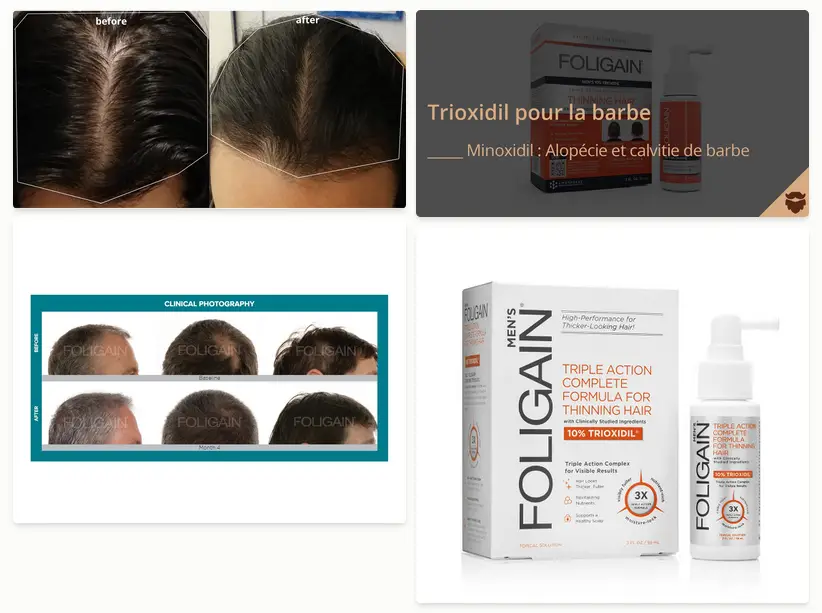
Key Takeaways:
- Improved hair density
- Reduced shedding
- Healthier scalp
Intrigued by these promising results? Dive deeper into the transformative effects of Trioxidil by exploring our comprehensive guide on Trioxidil’s before and after effects.
Before and After Effects of Using Minoxidil
When it comes to Minoxidil, the before and after effects are equally striking but in different ways. Users often experience rapid hair regrowth, particularly in areas that had started thinning. However, it’s crucial to note that these results often require ongoing application, as discontinuing the treatment can lead to a reversal of the gains. Case studies have shown that Minoxidil is particularly effective for those in the early stages of hair loss, offering a quick solution for regaining lost hair.
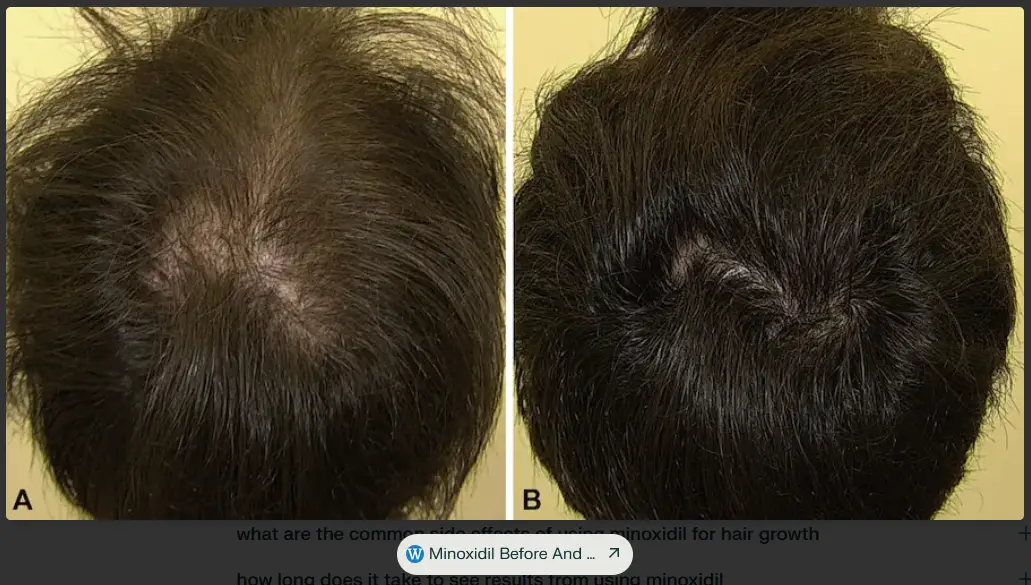
Key Takeaways:
- Rapid hair regrowth
- Effective for early-stage hair loss
- Requires ongoing application for sustained results
Ready to see these results for yourself? Learn more about what you can expect from Minoxidil in our detailed guide on Minoxidil’s before and after effects.
FAQs
Is there a better option than Minoxidil?
The question of whether there is a better option than Minoxidil is subjective and depends on various factors like the stage of hair loss, skin sensitivity, and personal preferences. While Minoxidil has been a go-to solution for many, newer treatments like Trioxidil offer a more targeted approach. Some users prefer natural alternatives, such as essential oils or herbal treatments, although these may not be as effective as clinically proven options.
Does Trioxidil regrow hair?
The question does Trioxidil regrow hair is one that many potential users ask. The answer is yes, Trioxidil has been shown to effectively stimulate hair regrowth in multiple case studies. It works by targeting the root causes of hair loss, such as poor scalp circulation and weakened follicles, to promote healthier, denser hair.
What is Foligain Trioxidil?
Foligain Trioxidil is a specialized formulation that combines the benefits of Trioxidil with other active ingredients to enhance its effectiveness. This product aims to provide a comprehensive solution for hair loss by not only stimulating new hair growth but also nourishing the scalp and strengthening existing hair. It’s a popular choice for those looking for a multi-faceted approach to hair loss treatment.
What is the recommended usage of Trioxidil and Minoxidil?
Trioxidil and Minoxidil should be applied topically to the affected areas of the scalp. Follow the instructions provided by the manufacturer for the recommended dosage and frequency of application.
How long does it take to see results with Trioxidil and Minoxidil?
Results may vary depending on the individual and the severity of hair loss. It is important to be patient and consistent with the use of Trioxidil or Minoxidil. While some individuals may start seeing results within a few months, it may take up to six months or longer to notice significant improvements.
Can Trioxidil or Minoxidil be used by both men and women?
Yes, both Trioxidil and Minoxidil can be used by both men and women. However, it is important to choose the appropriate formulation for your gender, as some products may be specifically formulated for either men or women.
Are Trioxidil and Minoxidil safe to use with other hair care products?
Trioxidil and Minoxidil can generally be used in conjunction with other hair care products. However, it is advisable to avoid using products that may cause scalp irritation or interfere with the absorption of the active ingredients. Always read the labels and consult with a healthcare professional if you have any concerns.
Can Trioxidil or Minoxidil be used on other areas of the body?
Trioxidil and Minoxidil are specifically formulated for use on the scalp and are not recommended for use on other parts of the body.
Are there any natural alternatives to Trioxidil and Minoxidil?
While Trioxidil and Minoxidil are popular hair loss solutions, there are also natural alternatives available. Some natural ingredients that have shown potential in promoting hair growth include rosemary oil, lavender oil, and pumpkin seed oil. It is important to note that natural alternatives may not have undergone extensive scientific testing and their effectiveness may vary.
For those interested in a potent solution, explore our Product Category: Minoxidil 15% to find a range of high-strength Minoxidil products that could be a suitable alternative or complement to Foligain Trioxidil.
Still have questions? Don’t hesitate to explore our comprehensive guide on hair loss treatments to find the answers you’re looking for.
Conclusion
In the battle of Trioxidil vs Minoxidil, both products have their merits. Trioxidil offers a comprehensive approach to hair regrowth, targeting the root causes of hair loss with its unique blend of ingredients. On the other hand, Minoxidil has a long-standing track record of effectiveness and is widely recognized as a treatment for hair loss.
Ultimately, the choice between Trioxidil and Minoxidil depends on your individual needs, preferences, and response to the treatment. It is advisable to consult with a healthcare professional or dermatologist to determine the best course of action for your specific situation. Remember, consistency and patience are key when it comes
The journey through the intricate world of hair loss treatments, particularly focusing on Trioxidil and Minoxidil, has been enlightening. Both treatments offer unique advantages and disadvantages, making the choice between the two highly individualistic.
Key Takeaways:
- Trioxidil targets the root causes of hair loss and is effective in stimulating new hair growth.
- Minoxidil is a well-established treatment but requires ongoing application for sustained results.
- Both treatments have their own sets of side effects, and it’s crucial to weigh these against the benefits.
In terms of personal recommendations, if you’re in the early stages of hair loss or looking for rapid results, Minoxidil might be the better option. However, if you’re looking for a more targeted and holistic approach to hair loss, Trioxidil could be the way to go.
For those who are still undecided or looking for a more potent solution, consider combining treatments. Our Topical Finasteride and Minoxidil guide offers an in-depth look at how these two treatments can work synergistically to combat hair loss effectively.
Ready to take the next step in your hair loss journey? Don’t hesitate to explore our comprehensive guides and product reviews to find the treatment that’s right for you.
This conclusion aims to summarize the key points discussed in the article, offering a final word of advice for those grappling with the decision between Trioxidil and Minoxidil. The choice ultimately lies in your hands, but armed with this information, making an informed decision just got a whole lot easier.
Additional Resources
Navigating the world of hair loss treatments can be overwhelming, especially when you’re bombarded with a plethora of options. To further your understanding and help you make an informed decision, here are some additional resources you might find valuable:
- Kaminomoto vs Minoxidil vs Yanagiya: A comparative study on three popular hair loss treatments.
- Nanoxidil vs Minoxidil: Understand the subtle differences and decide which is best for you.
- Redensyl vs Minoxidil: A head-to-head comparison to help you choose the right treatment.
- Alcohol-Free Minoxidil: An alternative for those sensitive to alcohol in topical solutions.
For those who prefer scientific literature, these peer-reviewed articles offer in-depth insights:
- NCBI Article on Hair Loss Treatments
- PubMed on Minoxidil
- Mayo Clinic on Minoxidil Side Effects
- JAAD Journal Article
- NCBI on Hair Regrowth
Ready to dive deeper? Click on the links to explore each topic thoroughly and find the hair loss solution that’s perfect for you.
- AI Powered Bald Filter Online 2024: See Yourself with No Hair! - January 19, 2024
- Harklinikken Bad Reviews 2024: Analyzing Negative Feedbacks - January 18, 2024
- How to Get the Alex Eubank Hair | Step-By-Step Tutorial 2024 - January 18, 2024

